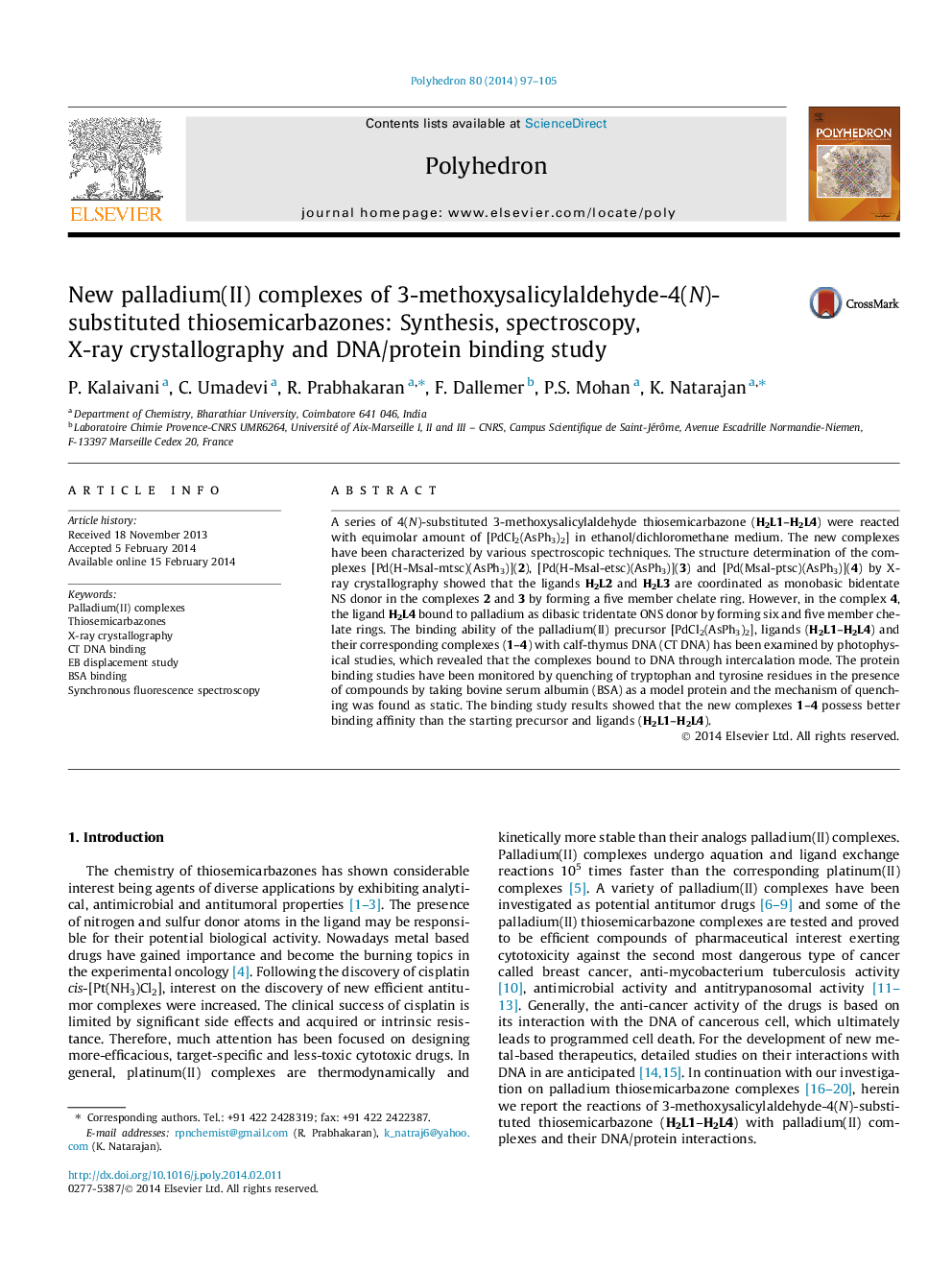| کد مقاله | کد نشریه | سال انتشار | مقاله انگلیسی | نسخه تمام متن |
|---|---|---|---|---|
| 1335287 | 1500259 | 2014 | 9 صفحه PDF | دانلود رایگان |

A series of 4(N)-substituted 3-methoxysalicylaldehyde thiosemicarbazone (H2L1–H2L4) were reacted with equimolar amount of [PdCl2(AsPh3)2] in ethanol/dichloromethane medium. The new complexes have been characterized by various spectroscopic techniques. The structure determination of the complexes [Pd(H-Msal-mtsc)(AsPh3)](2), [Pd(H-Msal-etsc)(AsPh3)](3) and [Pd(Msal-ptsc)(AsPh3)](4) by X-ray crystallography showed that the ligands H2L2 and H2L3 are coordinated as monobasic bidentate NS donor in the complexes 2 and 3 by forming a five member chelate ring. However, in the complex 4, the ligand H2L4 bound to palladium as dibasic tridentate ONS donor by forming six and five member chelate rings. The binding ability of the palladium(II) precursor [PdCl2(AsPh3)2], ligands (H2L1–H2L4) and their corresponding complexes (1–4) with calf-thymus DNA (CT DNA) has been examined by photophysical studies, which revealed that the complexes bound to DNA through intercalation mode. The protein binding studies have been monitored by quenching of tryptophan and tyrosine residues in the presence of compounds by taking bovine serum albumin (BSA) as a model protein and the mechanism of quenching was found as static. The binding study results showed that the new complexes 1–4 possess better binding affinity than the starting precursor and ligands (H2L1–H2L4).
A series of new palladium complexes containing 4(N)-substituted 3-methoxysalicylaldehyde thiosemicarbazone were prepared and structurally characterized. The new complexes were subjected to test their DNA/Protein binding studies.Figure optionsDownload as PowerPoint slide
Journal: Polyhedron - Volume 80, 25 September 2014, Pages 97–105